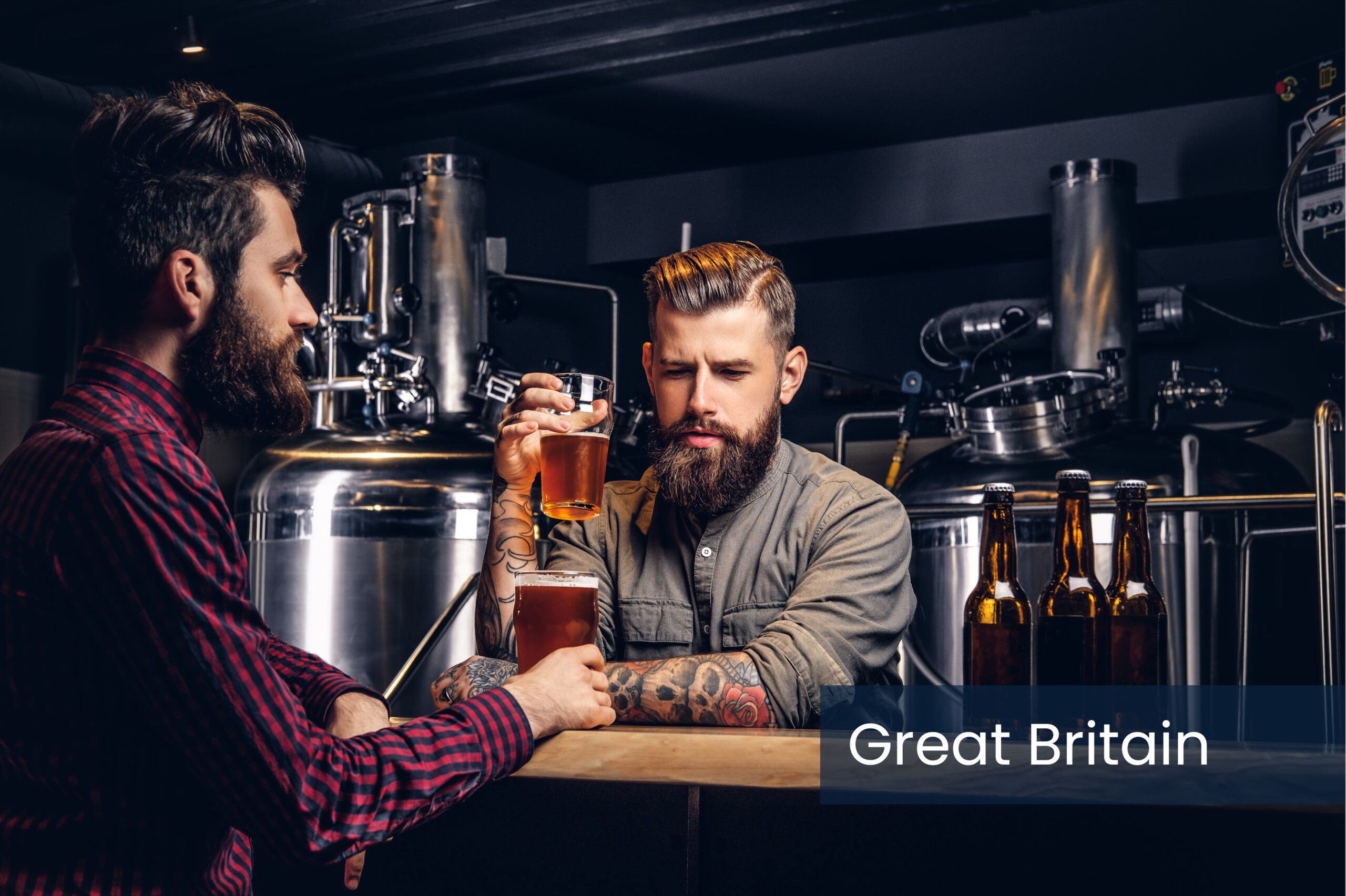The last 12 months certainly wasn’t plain sailing, and for many the tightening of purse strings and eroding of bottom lines continued at pace. However, as is often the case, the hospitality industry exhibited a resilience and adaptability that meant many were able to weather the storm and come out the other side with a small, but optimistic, spring in their step.
But despite a marginally improving operator landscape, for consumers, cost-of-living pressures still loomed large with over 90% reporting being affected in some capacity by the crisis throughout 2023.
Premiumisation
One trend that showed no signs of abating was a movement up the price ladder towards more premium categories. In 2023, world lager and stout continued to take full advantage of consumers’ willingness to spend more on better quality drinks, whereas craft beer was unable to reap the same rewards. In fact, the craft beer category, worth just shy of £1.2 billion, shrunk marginally (-1.3%) in the last year, and in doing so saw its share of total beer fall by 0.4pp [percentage points] to just under nine percent. Within the category, the performance of craft cask ale and lager drove overall declines and offset growth, and positive movement within craft keg ale. The growth of craft keg ale, like the growth of world lager, showcases premiumisation at play within their respective ale and lager categories. However, the variety of NPD [New Product Development] within world lager and the ever-growing distribution footprint this has led to, poses a threat to many categories’ share of taps on the bar, especially those that command lower prices and achieve lower rates of sale.
Promisingly for craft though, its drinkers are more likely than lager, ale or stout consumers to pay extra for a better-quality drink and so the opportunity to leverage the premiumising demands of the market is there for craft brewers whose brands are able to tick the relevant boxes around quality.
Changing occasions
Similarly, another trend that spilled over from 2022 and continued throughout last year was consumers’ changing occasion behaviour. We continued to see a reduction in visit frequency as budgets were squeezed, with everyday occasions like casual and after work drinks bearing the brunt of this scaled back visitation. The silver lining of this is that consumers increasingly looked to treat themselves when they did go out, which helped to further stoke the fire of the premiumisation train.
Tightened budgets also resulted in consumers looking to heighten the experience of every visit; maximising the ‘treat feel’ and extracting as much value as possible from their spend. This was good news for experience-led occasions, with more consumers visiting the on-trade for themed and ticketed events, live music, and boozy brunches to name a few. We see another great opportunity for craft brands to capitalise on the growing popularity of such occasions, as craft drinkers engage with them more frequently than consumers of other beer categories. Brewers can look to work with the operators who’re organising events like these with a view to having their brands front and centre on menus, special offers and the like.
It’s not just changing visit occasions that present an opportunity for craft beer in the pursuit of satisfying consumers’ growing demands for heightened experiences, however. We’re also seeing a slight shift in the type of outlet that consumers are visiting. Namely, we’ve seen an uptick in the popularity of brewery taprooms, wine and cocktail bars as consumers seek the added experience and quality of engaging with their favourite categories in specialist settings.
Sporting prowess
Elsewhere, we’re seeing the growing importance of sport for the on-trade, and by extension the opportunity for craft within that. Though traditionally the playground of mainstream lager, with major sporting events consistently accounting for double-digit uplifts in the on-trade for beer, suppliers are increasingly looking to enter the arena with other categories. With almost a third of craft beer drinkers visiting pubs to watch live sport, second only to stout and more than ale or lager, there’s a big opportunity for craft suppliers to leverage this engagement.
No and low grow
Something that also can’t be ignored is the growth of non alcoholic and low-alcohol beers. NAB/LAB’s circa 40% value growth in 2023 made it the best-performing beer category in percentage terms. The emergence of more and more alcohol free variants, as well as standalone brands has enabled consumers to broaden their engagement with, and enjoyment of, the category and we expect to see this upward trajectory continue.
The future
Looking ahead, to a degree we expect it to be business-as usual from a trend perspective. Even with falling inflation, it’ll be some time yet before consumers truly feel that the cost-of- living crisis is behind them. So, many of the behavioural changes and market dynamic shifts that we’ve seen over the last year or two will likely continue. The key thing for craft
brewers will be in achieving effective messaging around quality, provenance and craftsmanship, variety and style differentiation to ensure that brands can simultaneously hold their own alongside the winning names from other categories and stand out as accessible and desirable options that command their place on the bar.
Originally published in Siba’s Independent Beer Report, 2024 – The UK’s craft brewing sector in focus.
CGA by NIQ’s combination of sales and consumer research provides an unrivalled 360-degree of the beer category in the On Premise. To learn more about CGA’s suite of capabilities and opportunities for expert tailored analysis to help suppliers and operators gain sales and share, contact Nick Riley here.



